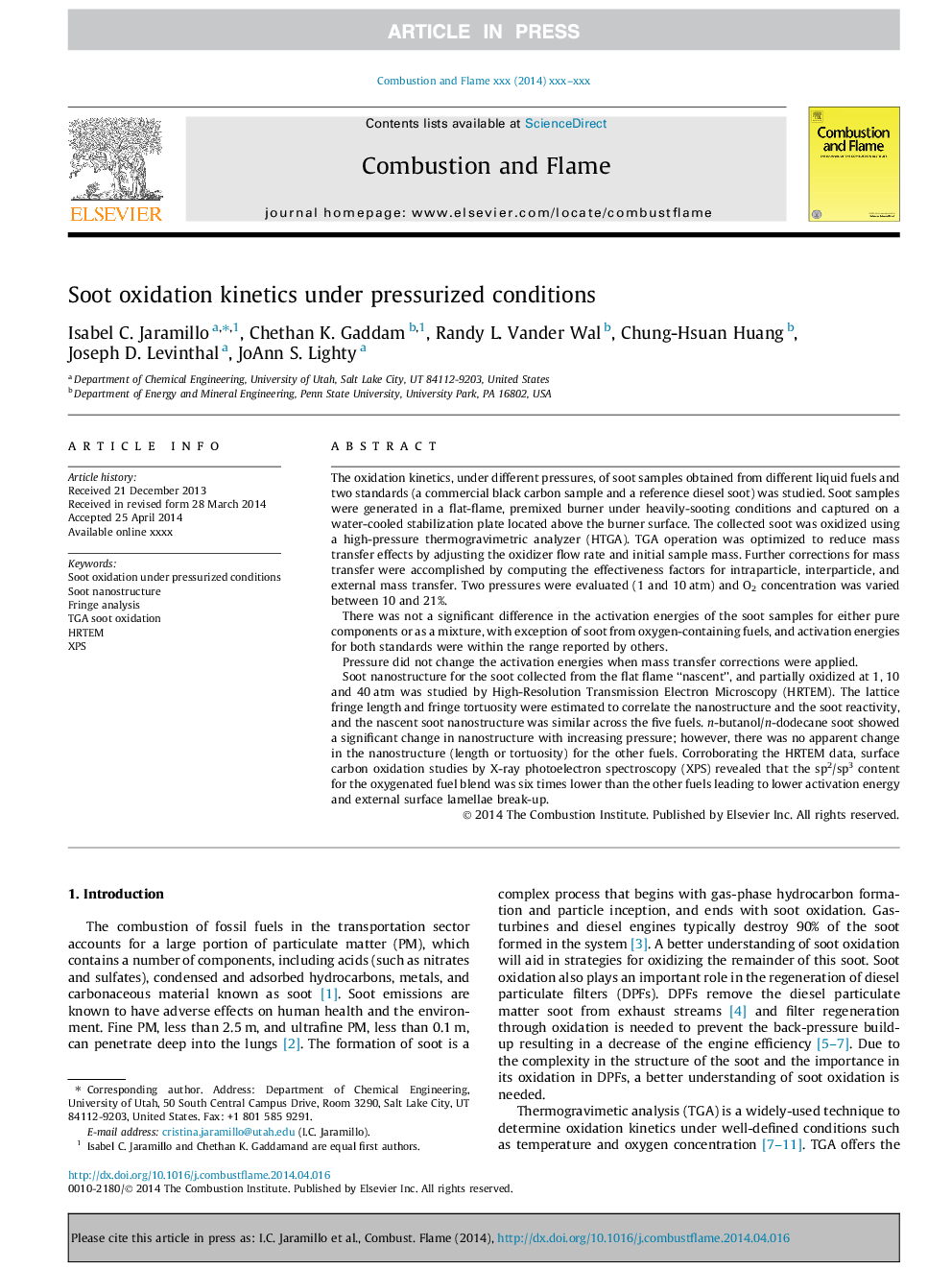| Article ID | Journal | Published Year | Pages | File Type |
|---|---|---|---|---|
| 10264347 | Combustion and Flame | 2014 | 15 Pages |
Abstract
Soot nanostructure for the soot collected from the flat flame “nascent”, and partially oxidized at 1, 10 and 40Â atm was studied by High-Resolution Transmission Electron Microscopy (HRTEM). The lattice fringe length and fringe tortuosity were estimated to correlate the nanostructure and the soot reactivity, and the nascent soot nanostructure was similar across the five fuels. n-butanol/n-dodecane soot showed a significant change in nanostructure with increasing pressure; however, there was no apparent change in the nanostructure (length or tortuosity) for the other fuels. Corroborating the HRTEM data, surface carbon oxidation studies by X-ray photoelectron spectroscopy (XPS) revealed that the sp2/sp3 content for the oxygenated fuel blend was six times lower than the other fuels leading to lower activation energy and external surface lamellae break-up.
Related Topics
Physical Sciences and Engineering
Chemical Engineering
Chemical Engineering (General)
Authors
Isabel C. Jaramillo, Chethan K. Gaddam, Randy L. Vander Wal, Chung-Hsuan Huang, Joseph D. Levinthal, JoAnn S. Lighty,
